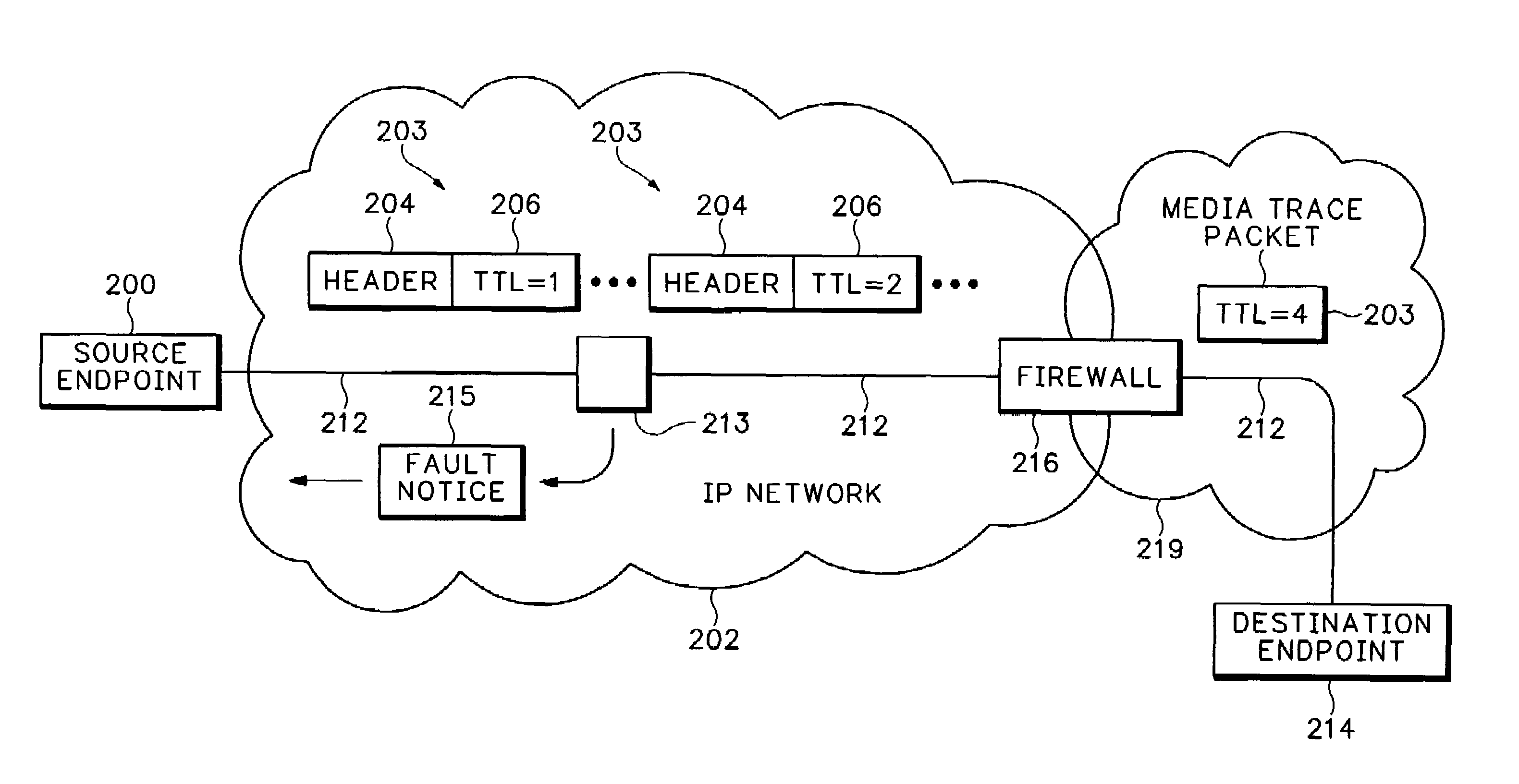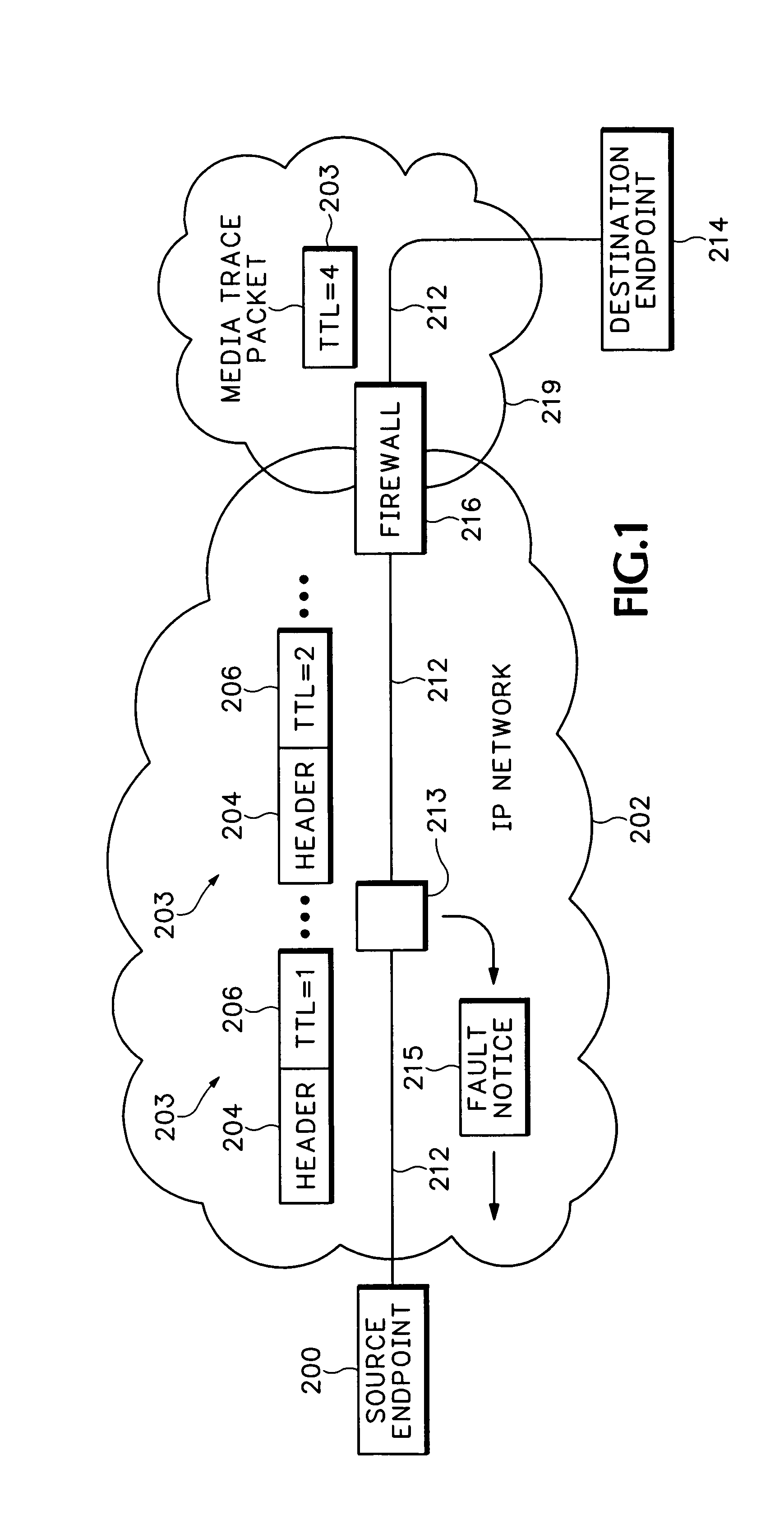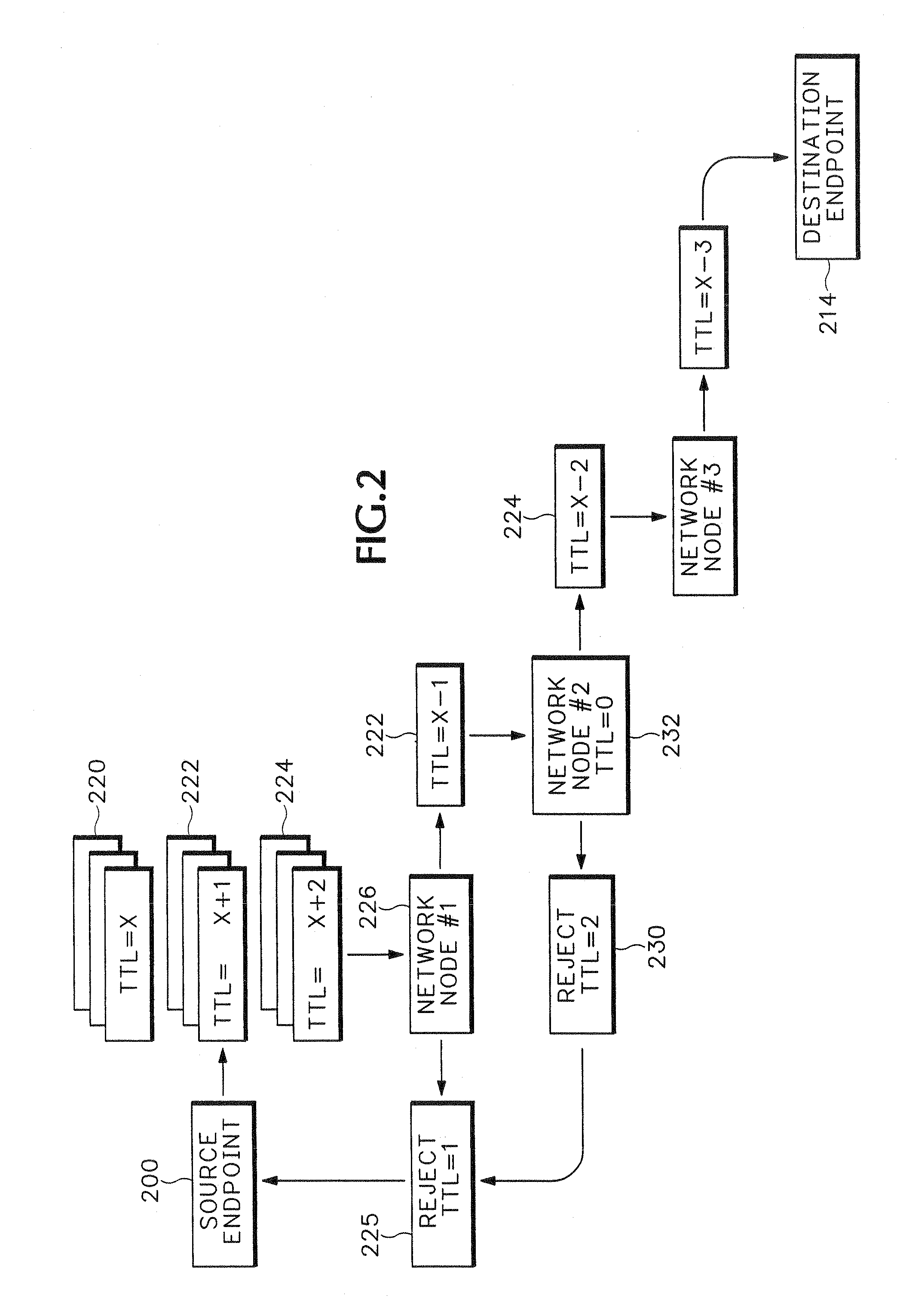Method and apparatus for analyzing a media path for an internet protocol (IP) media session
a media path and internet protocol technology, applied in the field of methods and apparatus for analyzing media paths for internet protocol (ip) media sessions, can solve the problems of no tools which can be reliably used, no good identifying of problem nodes in the network, and ineffective udp traceroutes in detecting network problems
- Summary
- Abstract
- Description
- Claims
- Application Information
AI Technical Summary
Benefits of technology
Problems solved by technology
Method used
Image
Examples
Embodiment Construction
[0023]Referring to FIG. 1, media trace packets 203 are used for analyzing a media path 212 in an Internet Protocol (IP) network 202. The media trace packets 203 have the same information in header 204 as regular media payload packets. Therefore, the media trace packets 203 will travel along the same media path 212 as media packets that are actually carrying a media payload. Specific Time To Live (TTL) values are set in the header TTL field 206 that intentionally cause faults in intermediary nodes, such as node 213, in the media path 212. The intermediary node 213 in response sends a fault notice 215 back to the source endpoint 200. The fault notice 215 is used for conducting QoS analysis of the media path 212.
[0024]One application for the media trace packet 203 is in the Real Time Transport Protocol (RTP), which is described in RFC 3550. The RTP protocol is used for carrying a real time media stream over the IP network 202. The media stream can contain any type of real time media, i...
PUM
 Login to View More
Login to View More Abstract
Description
Claims
Application Information
 Login to View More
Login to View More - R&D
- Intellectual Property
- Life Sciences
- Materials
- Tech Scout
- Unparalleled Data Quality
- Higher Quality Content
- 60% Fewer Hallucinations
Browse by: Latest US Patents, China's latest patents, Technical Efficacy Thesaurus, Application Domain, Technology Topic, Popular Technical Reports.
© 2025 PatSnap. All rights reserved.Legal|Privacy policy|Modern Slavery Act Transparency Statement|Sitemap|About US| Contact US: help@patsnap.com



